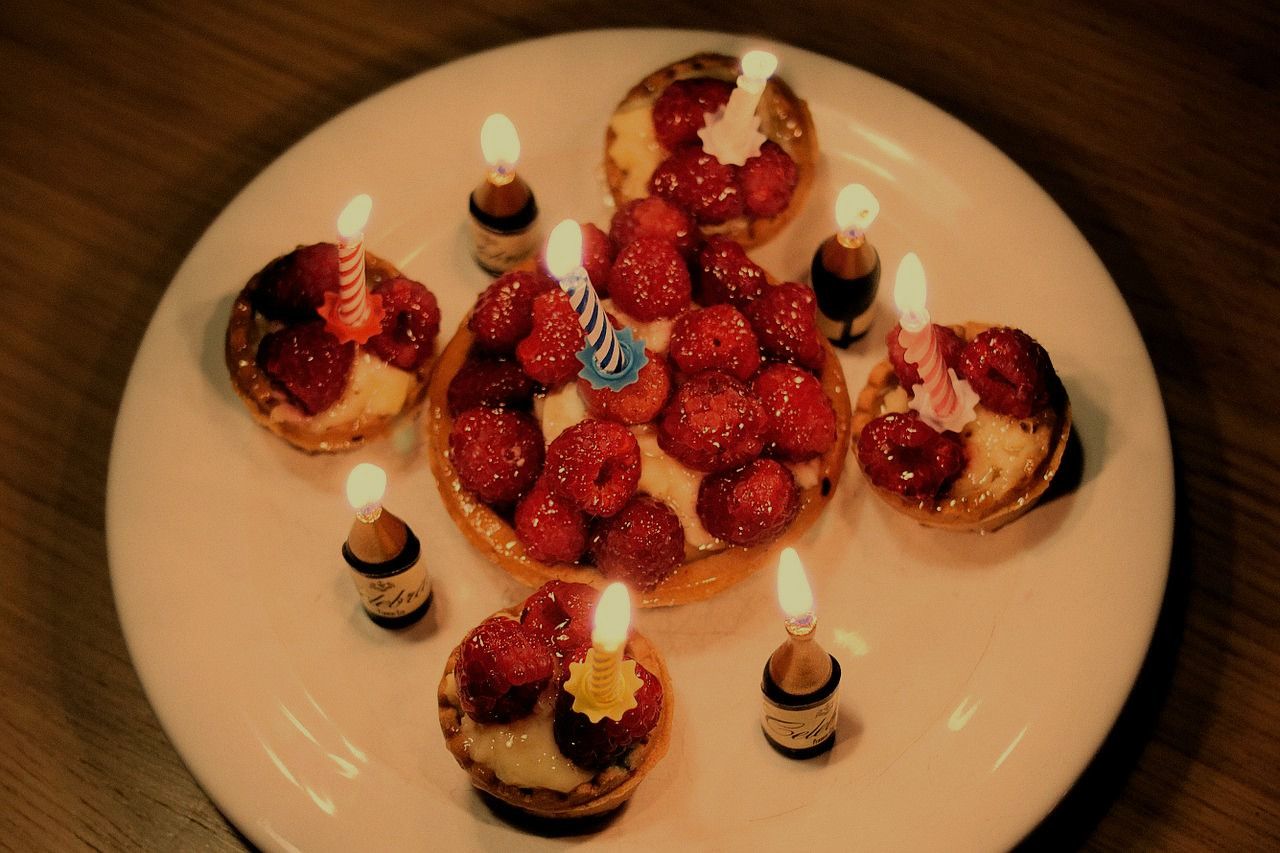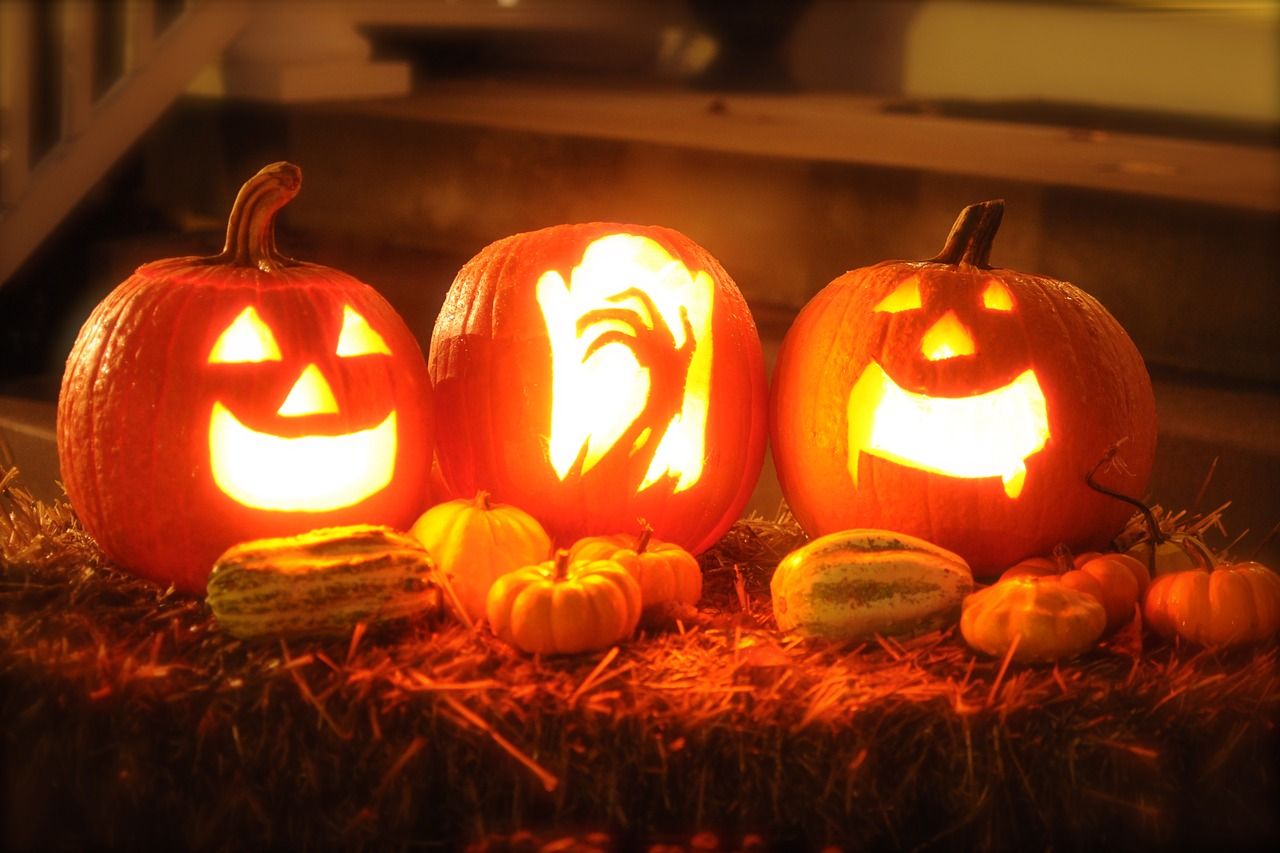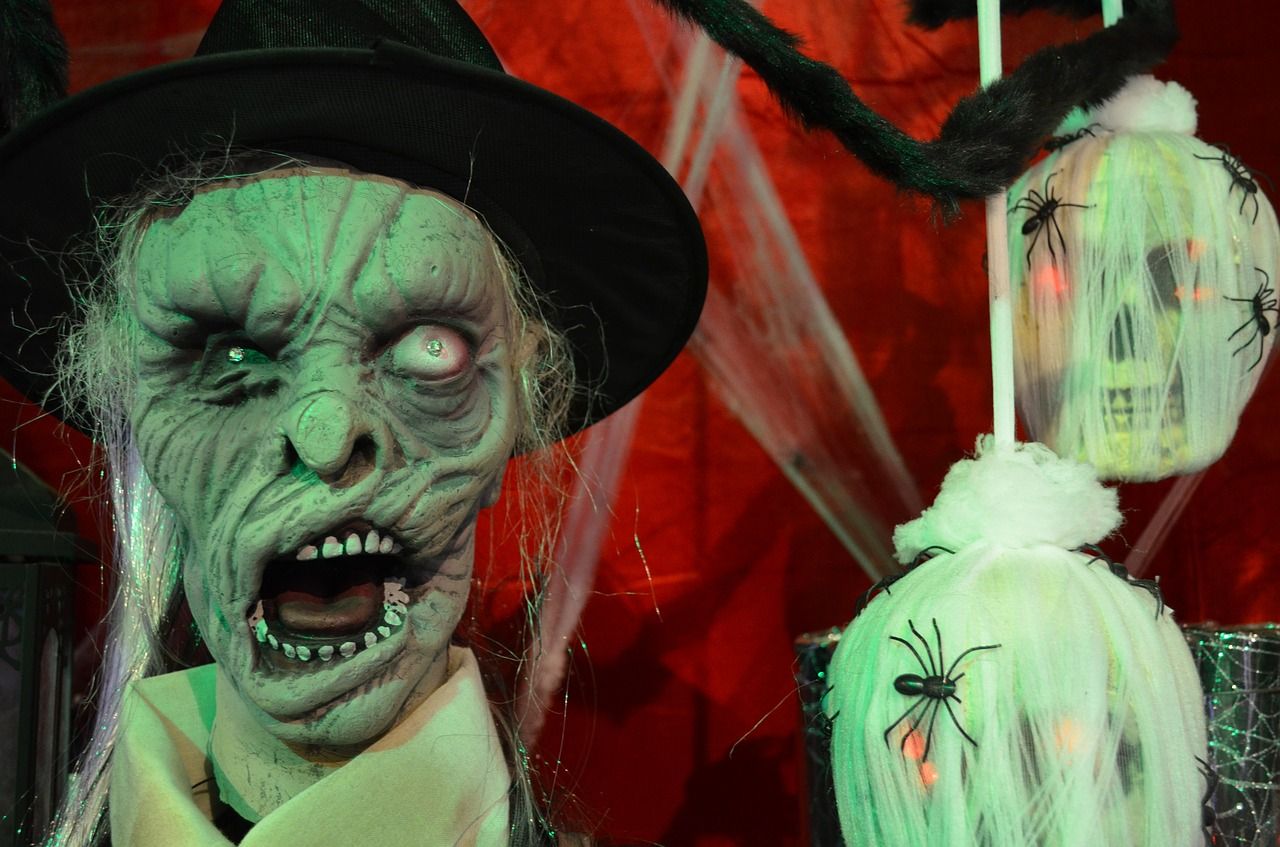Halloween – a beloved tradition in many countries. But where does it come from and how do we celebrate it around the world? Find out more!
Halloween - A Celtic Tradition
Each year on the evening of October 31stchildren dress up in unusual costumes and knock on doors shouting “Trick or treat”. However, where does this tradition come from?
Halloween – A Celtic Tradition
The term Hallowe’en originates from the term All Hallows’ Eve. To this day we still quite don’t know where exactly this custom comes from. The main reason for this lies in the fact that there are very few credible and objective sources of Celtic rituals. The prevalent assumption is that the tradition developed from the Celtic festival Samhain which was predominantly celebrated in Ireland to honour the end of the summer. According to the Celtic calendar this was done on the evening of October 31st. However, there are not many known customs or contemporary traditions that can definitely be attributed to this festivity without any doubts.

Celtic wheel of the year
Since countless peoples celebrated similar festivals we can assume that it was some kind of harvest festival. Communities that heavily depended on autumnal harvests often commemorated the goods in a festive manner, it has been documented that various Germanic tribes also had similar rites. It is possible that Samhain furthermore marked the beginning of the Celtic new year. Numerous legends dating from the middle ages that also don’t have a clear origin detail a great number of supernatural occurrences on this day. At some point later in history people began to believe that the curtain between the world of the dead and the world of the living could be lifted on that day, meaning the dead would able to come back to Earth.
The history of Samhain
As it was often the case Celtic rituals like merged with Roman traditions – the Romans having their very own festivities at that time of the year, which can also be described as some sort of harvest festival. The same goes for Christianity. Pagan and Celtic celebrations were often copied and amended to fit a more Christian view, uniting old beliefs with new faith. Festivities commemorating saints were arranged in the spring in most countries around the world. This would change in the year 835 though when Pope Gregory IV established this festivity to be celebrated on November 1st - exactly one day after Samhain. Again we can only speculate about the reasons for this decision: Did he simply want to avoid too many festivals in the spring or did he want to combine both celebrations?
While the western regions were celebrating the first day of November as All Saints’ Day long before the papal ruling, Ireland was still using April 20th even in the 8th century. That is why it is widely assumed that this tradition originates from Germanic tribes rather Celtic ideas. Most legends of Samhain derive from the middle ages, although it is very possible that the origins date back much further. Customs from this time have been passed down through the years, however they differ from country to country and even communities may celebrate differently according to their very own local legends. Other important festivities also had similar customs, meaning it is not a special characteristic of that day.
First accounts that resemble today’s customs of this celebration date back to the 16th century. Soul cakes that were given to beggars knocking on people’s doors on October 31st were already noted in the records, though they are mentioned sparsely before 1700. Children also liked to knock and were not only given cookies but also fruit and money. This practice declined after 1870 as compulsory education was introduced and left little time for the youngsters to take part in such activities.
Generally speaking, this tradition was used to help poor people and all those that were unable to earn money during the colder season of the year. Another way for these people was dressing up and performing little plays. This custom was practiced in various forms throughout large parts of Great Britain. These established customs were brought to America with the influx of Irish immigrants. There, they would be adapted and quickly gained popularity. Clever marketing in the 1990s caused Halloween as we know it today to spread quickly all over the world, becoming a “beloved tradition” in foreign countries.

Modern soul cakes
Origins of Halloween customs
Costumes:
This tradition likely stems from the plays that were performed during winter to gain money, food or shelter. In other regions it was custom for young men to dress up as women and other places rubbed soot onto their skin and donned black robes to walk the streets.
Older customers that are based on the belief that ghosts would come back to Earth included wearing masks and costumes so as to prevent recognition by the supernatural. Furthermore, at the beginning of the 20th century a popular custom was to wear scary masks only instead of whole costumes. Another practice in some areas during the 20th was to dress up as ghosts and visit other people’s homes. The residents of the home then had to ignore the guests.
Trick or treat:
Early sources from the middle ages that might even date back even further to the Celts speak of leftover food that was kept on display. It is unclear whether this was supposed to please the ghosts of the dead or to ward off evil ghosts and witches.
From the 16th century onwards we can find reports of so-called soul cakes that were given to supplicators in return for a prayer in favour of the deceased of the house. Often the beggars would also sing. Other gifts such as money, fruit, beer or shelter were given as well. This tradition went on from holiday to holiday throughout the entire winter. Over the years children began to partake in these activities, particularly in the night before Allhallows.
It is unclear where exactly the custom of pranking comes from. The beggars were allowed to sit somewhere in the kitchen. They had to ignore the owners of the house as best as possible who in turn had to supply the guests with food and drink. Perhaps this kind of joke evolved into more elaborate pranks as we know them today.

Halloween sweets
Jack-o‘-lanterns:
Known as Jack O‘Lantern in Ireland and sometimes called “punky”, this custom dates back to the legend of sightings of ghost lights. Initially, spooky faces were carved into turnips instead of pumpkins.
It was solely due to practicality that Irish and Scottish immigrants in America started opting for pumpkins. This custom would be adopted by others.

Small jack-o’-lanterns
Halloween customs around the world
The customs mentioned above are typical for many countries nowadays. Others however have adapted these practices and moulded them into their own version to better fit their own culture.
Isle of Man:

Isle of Man international flag
The Isle of Man in particular stands out. The Celtic roots are still present today. Some residents also celebrate the festival as a passage from the old to the new year. The name of the festivity is Hop-Tu-Naa. It also has children roaming around and asking for sweets. Songs are being chanted and the lanterns the children are carrying around are made from turnips.
Divination too is part of the Isle of Man customs. Traditionally the fire is put out last at night and participants try to determine a footprint in the ashes. Depending on where the footprint is facing, the family will either face a death (pointing towards the door) or a birth (pointing inside the house).
Japan:
The country that brought us imaginative anime and manga shows a tendency of choosing Halloween costumes depicting Pikachu, Sailor Moon and video game characters. A stark contrast are the few exceptions with people dressing up elaborately as bloody, spooky creatures. Still, the celebration regarded more as a funny American activity than a serious tradition. Big cities however have begun to host large parties and parades where people dress up and have a good time together.
Mexico:
In Mexico the Day of the Dead is an important part of culture. Originally a summer tradition, the festivity now takes place from October 31st to November 2nd. The people celebrate the reunion of the living with the departed. Streets are adorned with flowers, skeletons and skulls. The cheerful atmosphere is reinforced with music and dancing. Food also plays an important role. The bread of the dead along with graves and colourful skulls (“calavera de dulce”) made from sugar are popular. At midnight of the last day the dead are bid farewell and the celebration ends.
Australia:

Initially, importig pumpkin was difficult
For a long time Australians have refused to incorporate Halloween into their lives. Children and teenagers however have grown fond of this celebration, meaning that slowly Halloween has gotten more popular amongst all circles of society. Importing pumpkins has proven to be a big obstacle. Despite all this, Halloween as a die-hard fanbase in Australia. Due to the geographical location of the continent the event takes place in the summer, allowing for fun activities such as “Zombie Walks” to take place. Thousands of participants dress up as zombies in larger Australian cities. The proceeds often go to charities. It is also common to put up an orange balloon in front of the house to let children know they can come and ask for sweets.
South Africa:
In Africa Halloween has not gained much popularity yet and South Africa seems to be the only country that has started to slowly acknowledge the event. Due to a somewhat uneasy situation, trick or treating is not part of Halloween in South Africa. However, in bigger cities themed parties are organised. In Cape Town for example there are several days dedicated to the festival with parties, costume contests, Zombie Walks and horror movie marathons.
Germany:

Halloween decoration
In the mid-90s Halloween slowly swapped over to central Europe and found particular approval in Germany. Everything began with newspaper articles that detailed the strange phenomenon from the US. Many producers of candy and homegoods immediately took up this trend, marketing the festival so heavily it actually began to become a part of German culture in the 21st century. Long before the actual celebration a creepy atmosphere is generated in stores and homes alike. Skeletons, jack-o-lanterns and cobwebs. Even though decorating houses is much more common and elaborate in the US, it is not uncommon to see in Germany, in fact preparing for Halloween has become more extensive than preparing for All Saints’ Day and All Souls’ Day.
In Europe the festival has become an exciting event among children that get to dress up in scary costumes, knock on doors and ask for candies. Along with the trick or treating more American customs are adapted, such as “apple bobbing”. However, not only the young enjoy Halloween – more and more themed parties are hosted in bars, clubs and of course at home.
Author: A-818741


